
Concept explainers
(a)
The
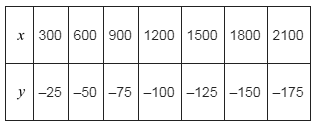
(a)
Answer to Problem 90E
The value gets increases towards the x-axis. It is lying in the fourth quadrant.
Explanation of Solution
Given information:
Consider the below table which shows that from the top or mountain road a surveyor takes several horizontal measurements x and several vertical measurements y as shown in the table Where ( x and y are measured in feet)
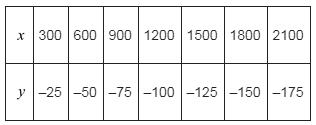
Sketch a scatter plot 0f the data.
Formula used:
Plot the x value in horizontal axis and the y axis in vertical axis.
Calculation:
Scattered plot of above considered table data is shown below
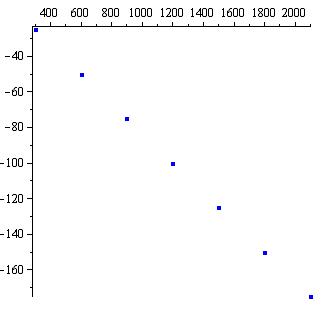
Conclusion:
The value gets increases towards the x-axis. It is lying in the fourth quadrant.
(b)
The line that best fits the data using the straightedge method.
(b)
Answer to Problem 90E
The value gets increases towards the x-axis. It is lying in the fourth quadrant and forming the straight line.
Explanation of Solution
Given information:
Consider the below table which shows that from the top or mountain road a surveyor takes several horizontal measurements x and several vertical measurements y as shown in the table Where ( x and y are measured in feet)
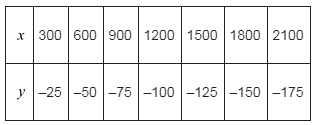
Use a straightedge to sketch the line that you think well fits the data.
Formula used:
Plot the x value in horizontal axis and the y axis in vertical axis.
Calculation:
Straightedge to the sketch line is shown below
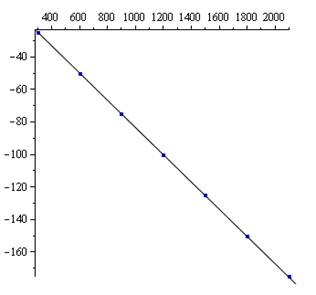
Conclusion:
The value gets increases towards the x-axis. It is lying in the fourth quadrant and forming the straight line.
(c)
The equation for the line using the straight edge method.
(c)
Answer to Problem 90E
The equation of line formed is
Explanation of Solution
Given information:
Consider the below table which shows that from the top or mountain road a surveyor takes several horizontal measurements x and several vertical measurements y as shown in the table Where ( x and y are measured in feet)
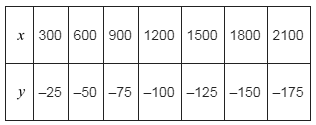
Find an equation for the line you sketched in part (b)
Formula used:
The equation of the line slope m passing through the point
Calculation:
Equation of line according above sketch line will be
The slope m of the non vertical line through
Here,
Hence, use the above formula to find the slope m of the non-vertical line through
Slope of the non vertical line through is
The equation of the line slope m passing through the point
So use the above considered point
Multiply both side of the find equation
Subtract both side of the find equation
Therefore, the equation of line formed is
Conclusion:
The equation of line formed is
(d)
The meaning of the slope of the line.
(d)
Answer to Problem 90E
The path of the road is being followed in straight way without any turns in between.
Explanation of Solution
Given information:
Consider the below table which shows that from the top or mountain road a surveyor takes several horizontal measurements x and several vertical measurements y as shown in the table Where (x and y are measured in feet)
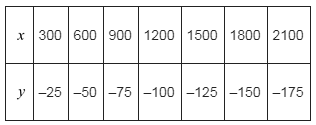
Interpret the meaning of the slope of the line in part (c) in the context of the problem.
Formula used:
The equation of the line slope m passing through the point
Calculation:
According to the result of part (c) it concludes that the path of the road is being followed in straight way without any turns in between.
Conclusion:
It forms the straight line path without any bends.
(e)
The sign state for the road.
(e)
Answer to Problem 90E
The sign that state on the road will be downhill grade.
Explanation of Solution
Given information:
Consider the below table which shows that from the top or mountain road a surveyor takes several horizontal measurements x and several vertical measurements y as shown in the table Where (x and y are measured in feet)
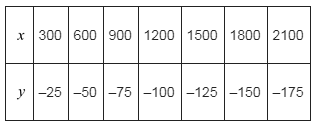
Formula used:
The equation of the line slope m passing through the point
Calculation:
The sign that state on the road with a downhill grade that has a slope of
Conclusion:
The sign that state on the road will be downhill grade.
Chapter 1 Solutions
EBK PRECALCULUS W/LIMITS
- a -> f(x) = f(x) = [x] show that whether f is continuous function or not(by using theorem) Muslim_mathsarrow_forwardUse Green's Theorem to evaluate F. dr, where F = (√+4y, 2x + √√) and C consists of the arc of the curve y = 4x - x² from (0,0) to (4,0) and the line segment from (4,0) to (0,0).arrow_forwardEvaluate F. dr where F(x, y, z) = (2yz cos(xyz), 2xzcos(xyz), 2xy cos(xyz)) and C is the line π 1 1 segment starting at the point (8, ' and ending at the point (3, 2 3'6arrow_forward
- I need help in ensuring that I explain it propleryy in the simplifest way as possiblearrow_forwardI need help making sure that I explain this part accutartly.arrow_forwardPlease help me with this question as I want to know how can I perform the partial fraction decompostion on this alebgric equation to find the time-domain of y(t)arrow_forward
- Please help me with this question as I want to know how can I perform the partial fraction on this alebgric equation to find the time-domain of y(t)arrow_forwardEvaluate F³ - dr where ♬ = (4z, -4y, x), and C' is given by (t) = (sin(t), t, cos(t)), 0≤t≤ñ .arrow_forwardMid-Term Review Find the formula for (f + g)(x). f(x) = x² - 10x + 25 and g(x) = x² - 10x + 24 (f + g) (x) = [ 2 ]x² X + DELL Skip Sarrow_forward
 Calculus: Early TranscendentalsCalculusISBN:9781285741550Author:James StewartPublisher:Cengage Learning
Calculus: Early TranscendentalsCalculusISBN:9781285741550Author:James StewartPublisher:Cengage Learning Thomas' Calculus (14th Edition)CalculusISBN:9780134438986Author:Joel R. Hass, Christopher E. Heil, Maurice D. WeirPublisher:PEARSON
Thomas' Calculus (14th Edition)CalculusISBN:9780134438986Author:Joel R. Hass, Christopher E. Heil, Maurice D. WeirPublisher:PEARSON Calculus: Early Transcendentals (3rd Edition)CalculusISBN:9780134763644Author:William L. Briggs, Lyle Cochran, Bernard Gillett, Eric SchulzPublisher:PEARSON
Calculus: Early Transcendentals (3rd Edition)CalculusISBN:9780134763644Author:William L. Briggs, Lyle Cochran, Bernard Gillett, Eric SchulzPublisher:PEARSON Calculus: Early TranscendentalsCalculusISBN:9781319050740Author:Jon Rogawski, Colin Adams, Robert FranzosaPublisher:W. H. Freeman
Calculus: Early TranscendentalsCalculusISBN:9781319050740Author:Jon Rogawski, Colin Adams, Robert FranzosaPublisher:W. H. Freeman
 Calculus: Early Transcendental FunctionsCalculusISBN:9781337552516Author:Ron Larson, Bruce H. EdwardsPublisher:Cengage Learning
Calculus: Early Transcendental FunctionsCalculusISBN:9781337552516Author:Ron Larson, Bruce H. EdwardsPublisher:Cengage Learning





